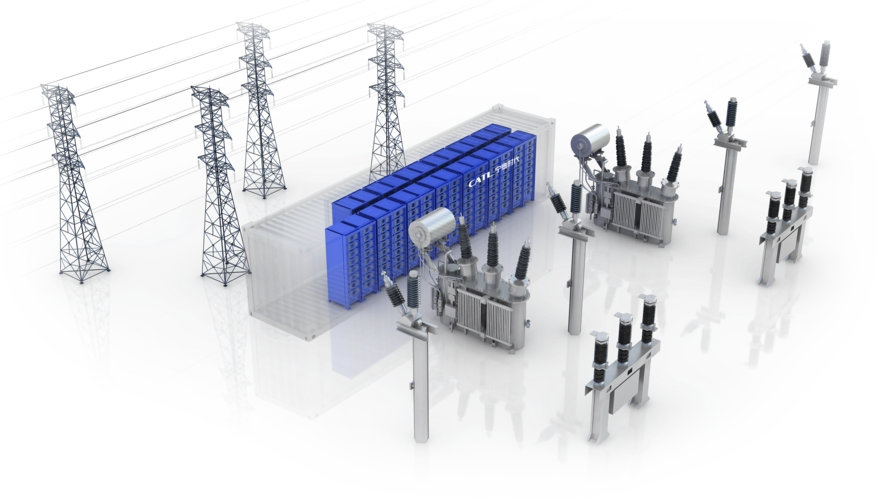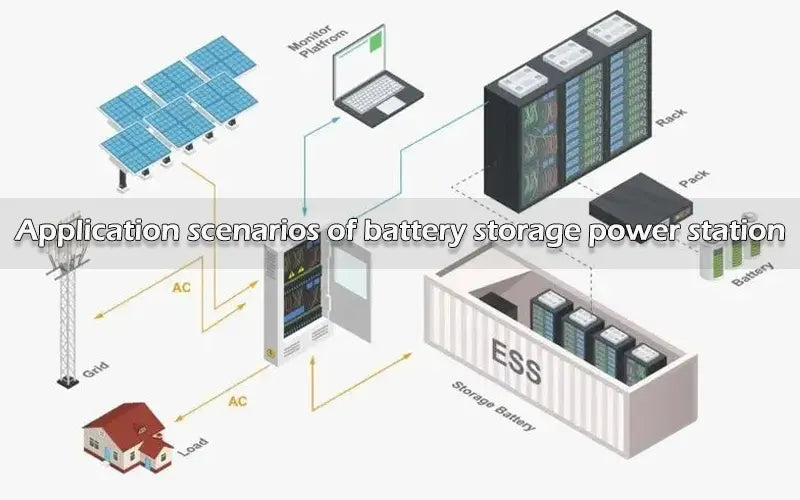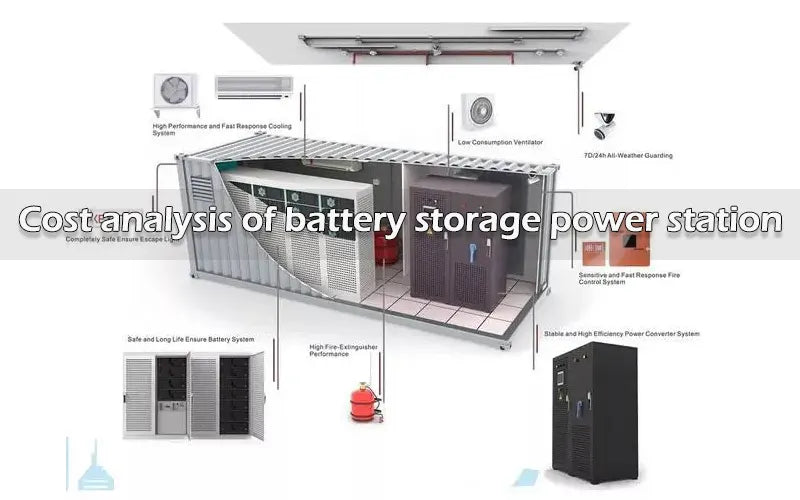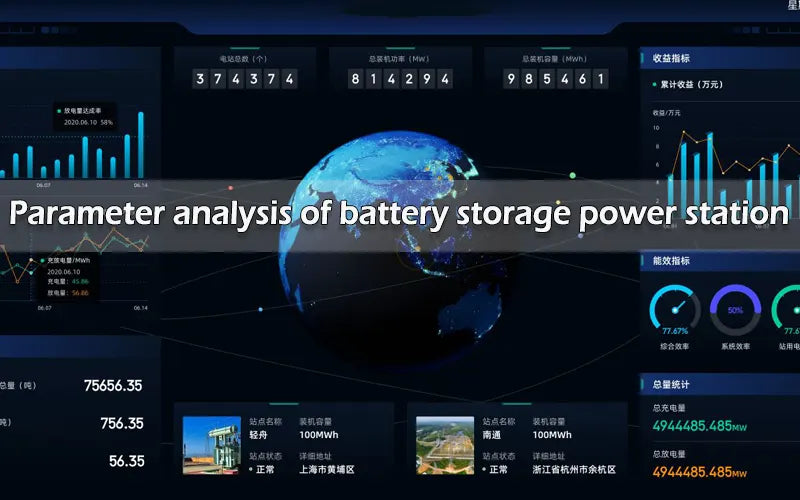
Main content:
The market for battery storage power station is considered to have a broad market space and diverse application scenarios. The energy storage sector has been boosted by a number of grid-side projects, and both the new installed capacity and the scale of operation have increased significantly.
Among them, lithium-ion battery energy storage technology has the advantages of high efficiency, application flexibility and fast response speed, and gradually occupies an increasingly important position in the power storage power station market. Lithium-ion batteries can be applied to power quality, reliability control, backup power, peak shaving, energy management, renewable energy storage, etc.
1. Working principle of battery storage power station
Taking lithium-ion battery energy storage power stations as an example, the working principle of emergency lithium battery energy storage vehicles, or fixed battery storage power station is to directly convert high-power lithium-ion battery packs into single-phase and three-phase alternating current through the inverter.
Usually, you only need to freely select the charging period to charge the battery pack, and when the lithium-ion battery pack is fully charged, it can be called at any time.
Energy storage battery is an indispensable storage energy component of solar photovoltaic power generation system, and its important function is to store the electrical energy of the photovoltaic power generation system through the battery storage power station, and supply power to the load in the insufficient amount of sunshine, night and emergency state.
● Charging
Emergency lithium battery energy storage vehicles or fixed battery storage power station is equipped with slow and fast charging sockets.
The fast and slow charging method is to control the length of charging time by selecting different charging currents.The whole charging process is monitored by an intelligent management system, and when any single voltage of the lithium-ion battery reaches the set value, the charger will automatically terminate the charging of the battery pack.

● Discharge
Emergency energy storage vehicle or fixed battery storage power station is specially designed with output interfaces. Generally, according to user requirements, high-power three-phase output interface and conventional single-phase output socket are designed.
● Maintenance
Usually, as long as the indicators of each single battery on the display screen of the lithium-ion battery management system are checked, no manual maintenance is required. The battery management system is equipped with a knowable capacity display, voltage display, temperature of each cell and display of its minimum or maximum voltage.
2. Application scenarios of battery storage power station
Energy storage lithium-ion batteries as an emerging application scenario has also gradually received attention, energy storage is one of the important means to solve the intermittent volatility of new energy wind power and photovoltaics, and realize the function of "peak shaving and valley".
In the practical application of China's lithium battery energy storage in battery storage power station, renewable energy grid-connection, home energy storage, grid side and auxiliary services are the four most important areas.
● Energy storage emergency power supply vehicle
The energy storage emergency power supply vehicle is composed of a lithium-ion battery pack, an inverter, a battery management system, etc., and the inverter directly converts the battery into single-phase and three-phase alternating current.
Usually, you only need to freely choose the charging period to charge the battery pack, and when the battery pack is fully charged, it can be called at any time within one year, and there is never a need for floating charging.
● Energy storage fixed power station
The energy storage fixed power station is composed of lithium-ion battery pack, BMS management system, PCS converter system, EMS energy monitoring system, auxiliary system, and power station-type energy storage system installed in the container.
Due to the small self-discharge of lithium-ion batteries, there is no need to keep them in a floating charge state for a long time like traditional lead-acid batteries or nickel-cadmium and nickel-metal hydride batteries.

Battery storage power station combined with new energy storage technology to become a distributed power source of independent microgrid. It is suitable for supplying reliable power supply in areas without electricity and lack of electricity, and can also supply peak shifting and valley filling and peak regulation and frequency regulation services for large power grids.
● Communication backup power supply
The market for communication backup power includes two important parts, one is that the energy storage of new base stations constitutes an annual market increment; Part of it is the expiration replacement of existing base station batteries, which constitutes the basic amount of the market every year.
3. Cost analysis of battery storage power station
The whole life cycle process of battery storage power station includes the project construction stage and the project operation stage.
- On the one hand, it is necessary to analyze the cost composition of battery storage power station.
- On the other hand, the calculation impact parameters of each cost should be analyzed.
Construction cost
The construction cost of an battery storage power station, also known as a system cost, refers to the cost of an energy storage system per unit capacity. It is mainly composed of equipment installation cost and construction construction cost.
Battery storage power station equipment includes energy storage batteries, battery management systems, energy storage inverters and power distribution systems. The cost of battery pack is the main cost of battery storage power system, and it is the main link of technology iteration and cost reduction in the future industrial chain.
Charging cost
The charging cost of an energy storage station refers to all the costs incurred during the charging process. When charging, because the energy conversion efficiency cannot reach 100%, the cost of energy loss generation is generated.
Therefore, this part of the cost mainly depends on the energy conversion efficiency. To calculate the cost of energy storage charging, it is necessary to consider the charging price, equipment utilization efficiency, annual discharge volume of the energy storage system and energy conversion efficiency parameters.

Operational labor costs
In some cases, the operation of energy storage equipment may require labor. Within a certain range, the fixed labor cost has nothing to do with the size of the stored electricity, and its total cost is unchanged. Variable labor costs are proportional to the frequency and duration of storage usage.
Operation and maintenance costs
The operation and maintenance cost of the energy storage power station is the cost required to maintain the energy storage power station in a good standby state. This cost includes photovoltaic panel cleaning costs, power station management, maintenance costs, etc. The fixed maintenance cost is the same regardless of how much storage is used.
Considering the limited service life of ESS, certain wear and tear will occur during the operation of the system, resulting in the cost of system life loss.
Plant electricity costs for energy storage purposes
The plant electricity cost for energy storage purposes is the electricity cost of battery storage power station for energy storage purposes. The cost of purchased electricity charges incurred by the power plant to maintain the operation of the battery storage power station.
In the process of calculating the cost of plant electricity for energy storage, parameters such as the proportion of electricity in energy storage power station to plant electricity consumption and energy storage capacity should be considered.
Cost of replacing energy storage batteries and equipment
In the battery storage power project, the battery of the energy storage element needs to be replaced many times during operation because of the small number of cycles, which results in the replacement cost of replacing the energy storage battery and equipment.
Under normal circumstances, the service life of batteries and equipment is less than the project life of the energy storage system, so the replacement cost of the battery needs to be considered during the operating life of the project.

Replacement costs are considered variable costs and their size depends mainly on the life of the battery and how often it is used. If calculated according to the 6000 cycle life of lithium-ion battery (lifepo4 battery) and charging and discharging twice a day, the battery needs to be replaced every 10 years.
When the energy storage battery exceeds its service life, it is not economical and environmentally friendly to replace the battery completely. Therefore, in actual operation, a certain capacity is added every year according to the annual decay rate of the battery to ensure the usable capacity of the energy storage system.
Disposal costs
When the life of each component of the energy storage system is exhausted, it needs to be treated harmlessly, and the money invested is the disposal cost.
The cost is mainly divided into two aspects: environmental protection expenses and equipment residual value. In the foreseeable future, the impact of recycling value on the economics of battery energy storage will become more and more due to the establishment and improvement of energy storage battery recycling mechanism.
Therefore, in the estimation of the disposal cost of battery storage power station, the purchase price per unit capacity, the rated capacity of the energy storage system, the price of the unit power energy storage inverter, the cost of auxiliary equipment per unit power and the residual value ratio parameters should be considered.
Other costs
The cost of battery storage power station also includes financial costs, taxes and other costs. The calculation of interest expense takes into account many parameters. Tax expenses should be considered in the operation of energy storage power stations.
4. Conclusion
With the reduction of energy storage costs, energy storage can be applied on a large scale in all aspects of power system generation, transmission and distribution, and play the role of peak shifting and energy management on a large scale.
Clarification of various costs and specific influencing parameters can provide a certain basis for the lean management of the cost of battery storage power station.
Related articles: photovoltaic power station, Top 10 portable power station companies, lithium ion battery storage